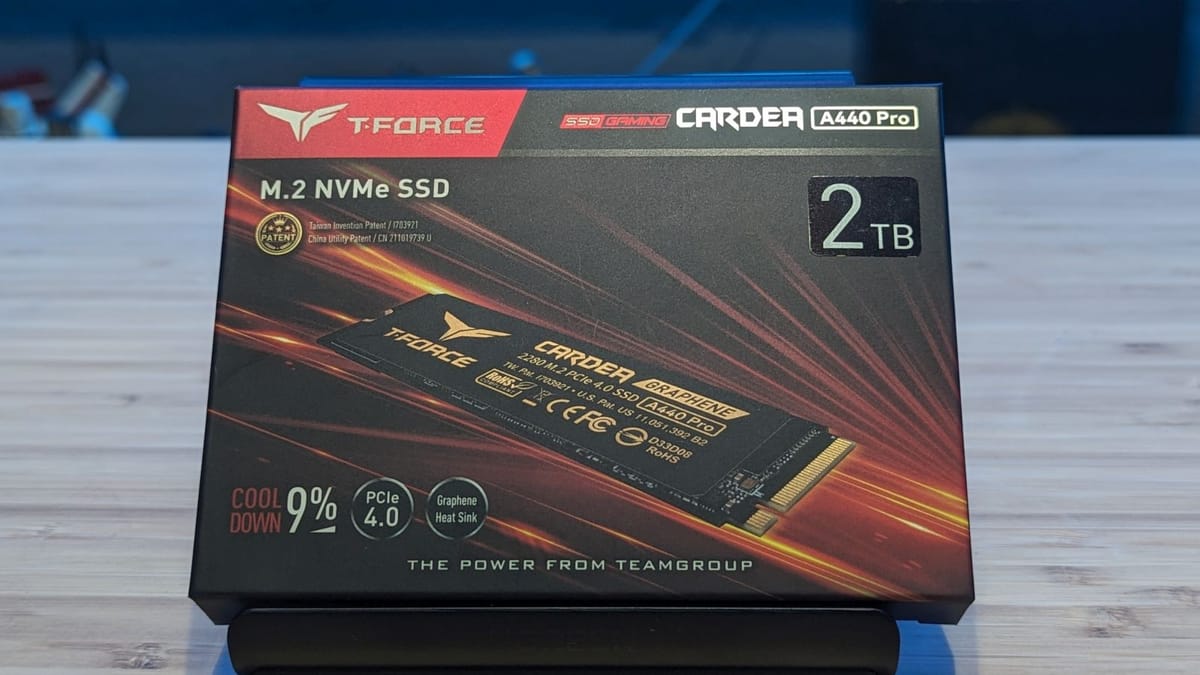
If you’ve never heard of TEAMGROUP or T-Force, that wouldn’t be a huge shock – they aren’t one of the big manufacturers normally found in the United States. Before you click away, don’t worry – this isn’t some knockoff garbage that will fail, losing your data, or somebody who won’t honor a warranty. TEAMGROUP was founded in 1997, representing one of the few manufacturers with vertical integration, meaning they are responsible for their own product design, material acquisition, manufacturing, and quality control. They do use controllers from other manufacturers, but as you’ll see in our testing, they’ve built a world class platform. You may not have heard of TEAMGROUP or their T-Force drives, but let’s talk about why this might be your best choice for your next build.

First things first, let’s get the tech specs on the table so we can see what’s under the hood. The TFORCE CARDEA A440 Pro M.2 NVMe is a PCIe Gen 4×4 NVMe drive, with a stated theoretical maximum of 7,400 MB/s read speeds, and 7,000 MB/s write speed. It follows a 2280 form factor, and at those speeds, should work wonderfully in a PC or a PlayStation 5 without issue. It carries with it two 1GB SKHynix DDR4-2666 CL19 for DRAM cache, 176 layer B47R Micron FortisFlash TLC NAND Flash, and uses a Phison E18 memory controller. We’ll get into the 200 GB SLC cache, and how it’s used in combination with the DRAM Cache to raise sustained write speeds when we get to measurements. The DRAM cache is also used for mapping tables (think of tables as the various “addresses” to the individual data bits that live on your drive), which you’ll see when we get to the random reads and writes tests in our review. Let’s load this in a PlayStation 5 first.
The PlayStation 5 has a certification process for their “approved” list, but any PCIe 4.0 4×4 model that can reach speeds in excess of 5,500 MB/s of read throughput will suffice. It’ll also support drives up to 8TB in size. The CARDEA A440 Pro can hit speeds in excess of 7000 MB/s, but there’s a hitch – you won’t see that number when you test the drive in your PlayStation 5. Why? Well, that has more to do with the theoretical maximums of the hardware than the drive itself. I’ve tested quite a few drives in my system, and the numbers range wildly from around 5,600 MB/s to 6,500 MB/s. Can you reasonably tell the difference between those two numbers? No, but why the variance? In a word – heat.
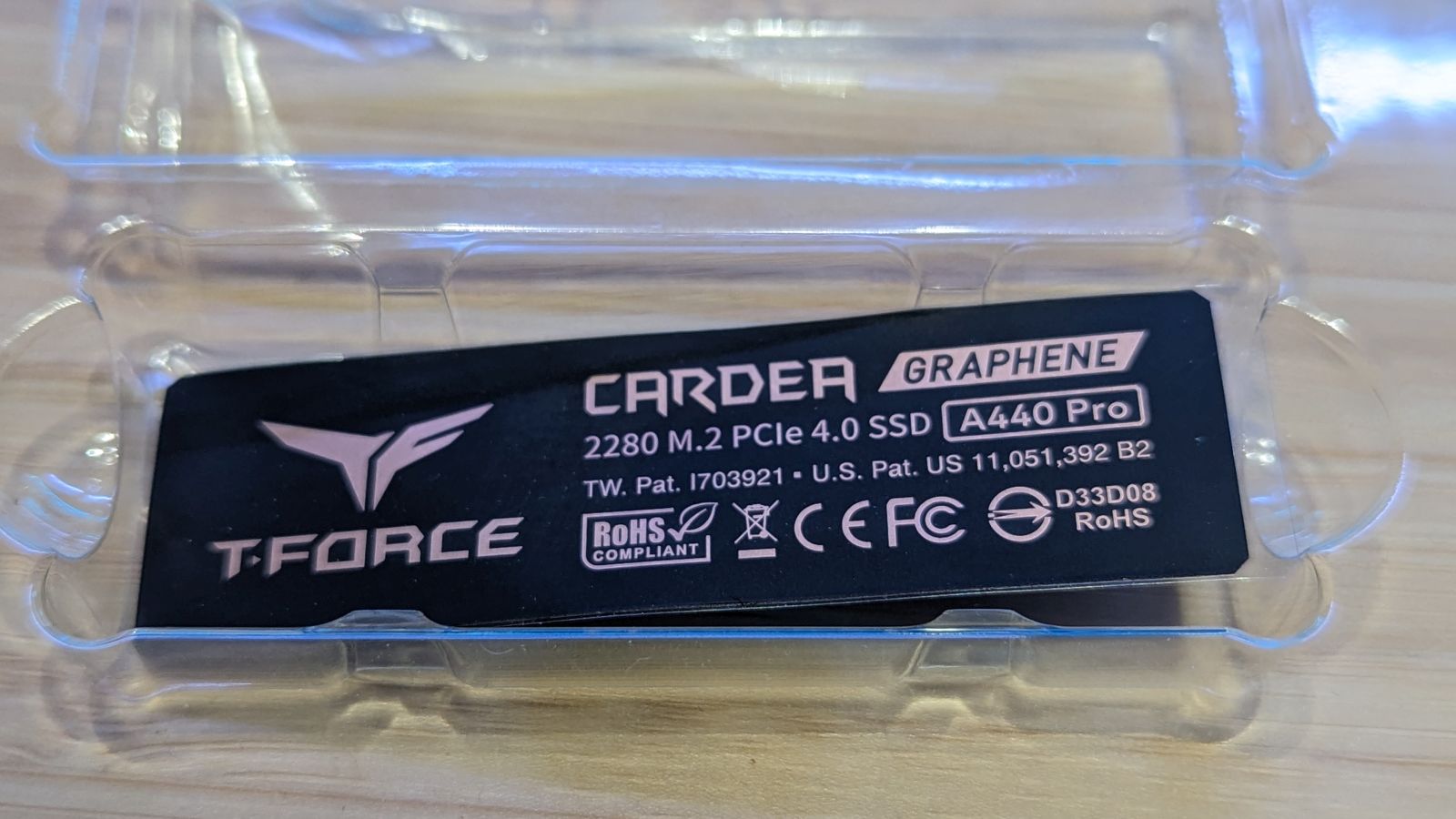
The CARDEA A440 Pro comes with a graphene thermal pad included that can be laid on top of the chips to disperse the heat. The 4TB model of this drive comes with an additional option of a full heatsink that you can use on the PS5, as long as you don’t put the door back on. This drive, and all NVMe drives, perform best when they are kept cool. In practice, drives we tested that were able to keep cool saw speeds near the 6,500 MB/s mark consistently. Ones that ran hotter fell down to around 5,500 MB/s. It’s not just speed either – higher heat can cause thermal throttling to get the heat under control, though we’ve not seen that with this drive quite yet. Instead, on Sony’s platform we are simply seeing the maximum speeds of the hardware. As such, any drive that can achieve the required speeds will be fine – including this one.
Back on PC, I’m testing this on an MSI Z790 Motherboard with an Intel 12900K processor and DDR5 running at 7000 MT/s – no bottlenecks on the test rig. We run our synthetic tests using a number of utilities including 3DMark, AIDA 64 Professional, ATTO, and Crystal Diskmark. While these will show the theoretical maximums, which is important to see the highs and lows the drive can achieve, they also give a comprehensive overview of performance over time. They also show what happens when you hit DRAM exhaustion, as well as some real-world examples of what you might see in practice. Let’s start off with Crystal Diskmark.
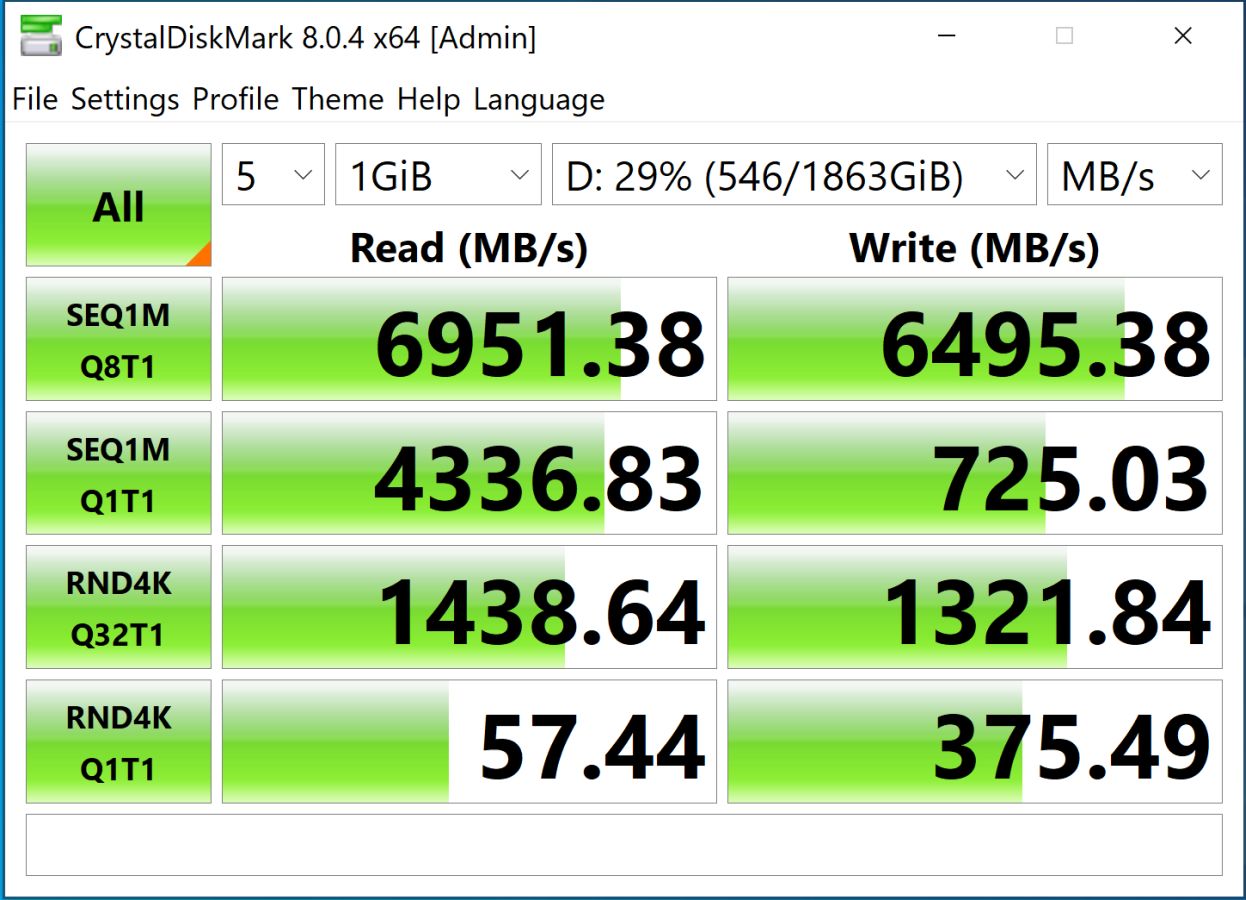
The advertised maximum rates on these drives are around 7400 / 7000, and we see a read/write speed fairly near those numbers with the drive at 30% full. That top number is the one most people focus on, but for a longitudinal test, I prefer ATTO.
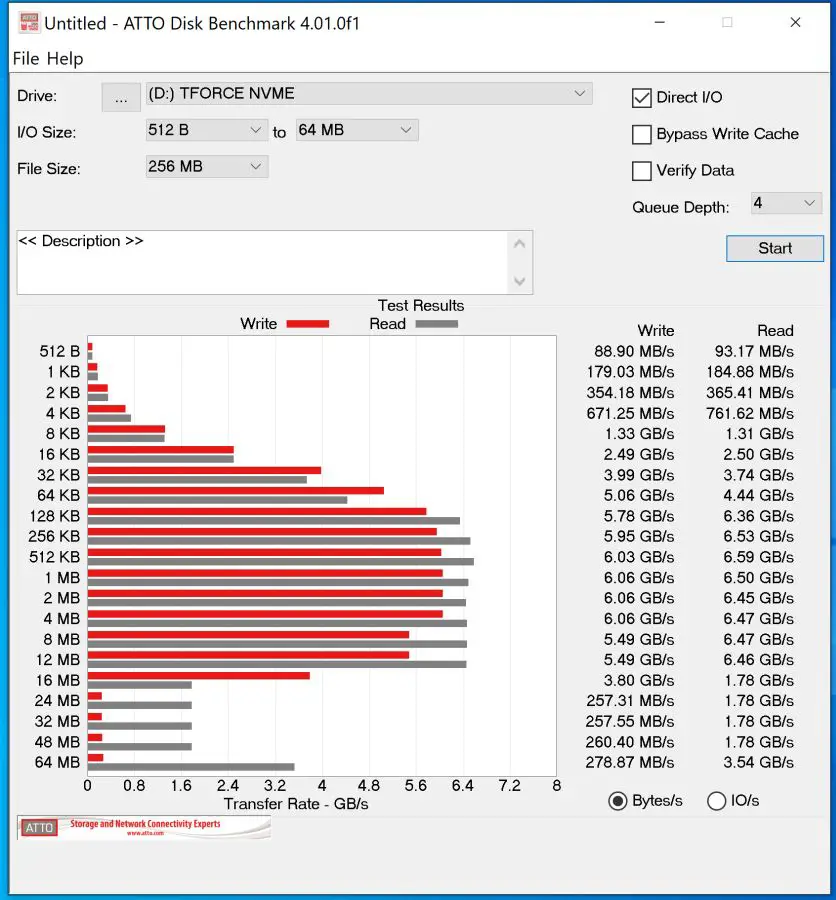
Moving smaller files seems slow on any drive, and that’s because there’s a spin up and spin down on every file. We see that here, but as the file size grows, we also see the speed increased drastically and consistently. But wait, you might say, what about the maximum speeds we saw in Crystal? Well, this is where we see the effects of DRAM exhaustion. The further along we go, the more we see the DRAM dwindle. Eventually the DRAM runs out and we start to see the effect you see here – a sharp reduction. It’s also here that we see the effect of the 200 GB SLC cache start to kick in. At the tail end of the test, we start to see the speeds increase again. On a longer test, we’d see that number continue to grow. While it won’t hit those center numbers on the write speed, the rest speed will achieve about 60% of it or so. That’s real world numbers, not synthetic. Let’s confirm.
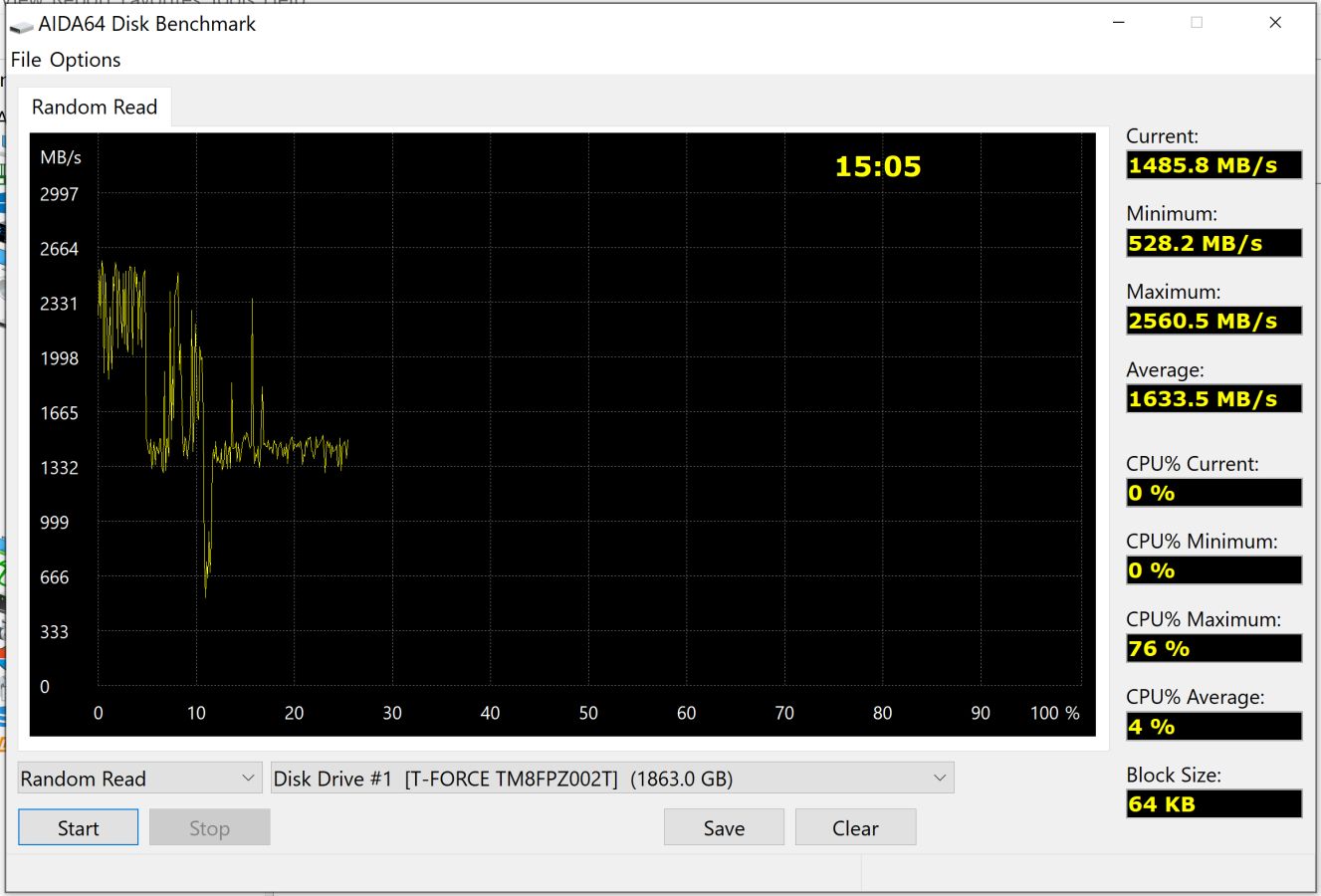
Using AIDA 64 we can see some of the same behavior. Running a sustained read test we see the speeds start off rocket-fast, and then we see them dip hard, and then pop back up to a very reasonable average that will hold indefinitely – around 1.63 gigs per second of real-world transfer speed. That’s near the top of the speeds we see in drives in this category and impressive.
Another important aspect of drive work is the access time. Speeds are important, but fast access times are almost more important. Remember what I said about small file sizes being painful? Here we see a blisteringly fast 0.05 ms access time – again, among the fastest drives we’ve tested.
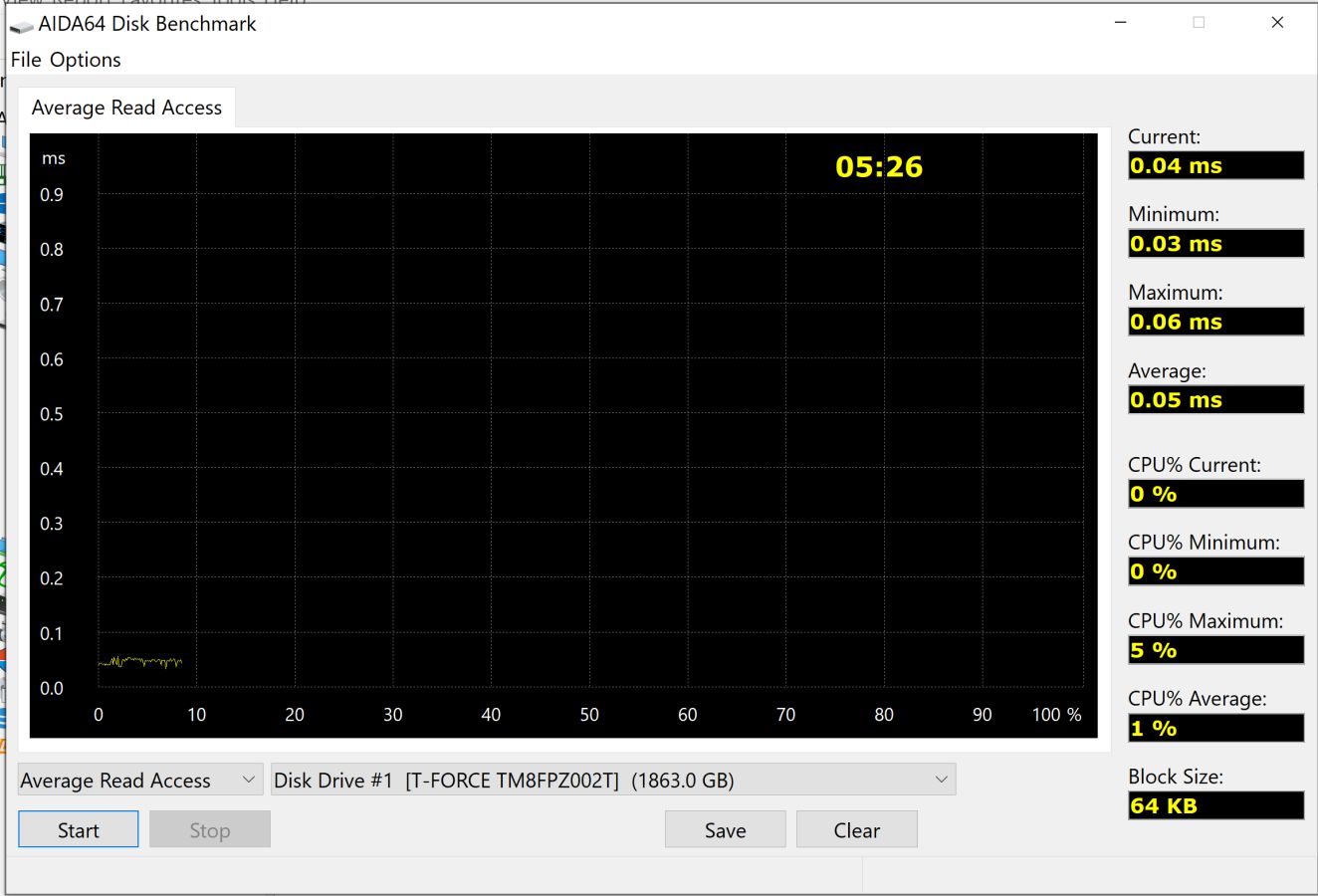
Running the AIDA64 comprehensive test we see aggregate numbers around what we found in other tests.

3DMark has a test for hard drives that pushes the drive with real world copies, a run of Overwatch, Call of Duty, and other games to test initial load times and transfer speeds to copy a game over. Just like in our other tests, it’s an amalgamation of tests using large and small files, showing how the drive performs with and without exhausted cache.

Once again we see very solid numbers across the board, including average access time and transfer rates.
Synthetic tests are one thing, but real world applications and performance is far more important. We use a mixture of Far Cry 5, Shadow of the Tomb Raider, Borderlands 3, and Star Citizen, with the latter being far from scientific — it’s just for fun. Across the board in our synthetic tests we see load times consistent with a Samsung 980 Pro or the WD_Black SN850 – both leaders in the space. Switching to real-world testing, we see the same thing – almost imperceptible differences between this drive and the direct competition from Western Digital and Samsung. Here’s where things get interesting.
Most people, me included, grow to fill our fish tank. We fill up our drives with tons of data, no matter how much capacity we buy and use the tail end of the drive at or near full. Remember that this drive has an SLC cache of 200 GB? When the DRAM cache runs out on most drives they tend to bottom out and gutter like a 1970s Ford Pinto, burning up your temps and giving you little in return. Thanks to what I can only imagine was a tremendous amount of engineering and tuning by Teamgroup, it utilizes its SLC cache to great effect to reverse that bottoming out when the drive is near full. Instead, it juggles between the SLC and TLC cache, settling into a real-world large-transfer 2.4 GB/s average transfer speed on long and sustained reads and writes. How much faster? Well, our reviews of the Samsung 980 Pro put that drive at around 1.85 GB/s, and the WD_Black SN850 at around 1.66 GB/s. While everyone focuses on those top theoretical numbers, it’s the “I’m going to copy over this entire game” numbers that matter more, and the TFORCE CARDEA A440 Pro smashes its competition in every single way.
The last thing we look at in our hardware reviews is price and warranty. The A440 Pro is priced at just $95. You read that right – for less than a C-note you can put an additional 2TB of space into your PS5. If you want the 4TB model, that’ll set you back $219. As you can guess, 8TB will cost $799, though we didn’t test either of the higher capacity drives to know how they perform. There are certainly cheaper drives, but they are cheaper for a reason. The price to performance ratio of the A440 Pro is better than anything else on the market.
Teamgroup provides a 5 year warranty for their drives. The only thing that gives me pause is that I’ve not tested what that warranty support experience is like. I gave a call to Teamgroup and asked some basic support questions about installation, compatibility, and their RMA processes. If needed, you’ll have to mail the drive back to their California office. Unfortunately that will be at your own expense, though the return is free. Most companies do cross-ship RMA for free, so perhaps that’s something Teamgroup can improve. Still – the five year warranty is on par with the top tier of the industry, so that’s encouraging that they stand behind their product. Not too shabby from a company you might not have heard of before today, eh?
TFORCE CARDEA A440 Pro M.2 NVMe SSD
Excellent
The TFORCE CARDEA A440 Pro sets several new records for both synthetic and real-world sustained speeds. Impressive in every way, this drive also leads the price to performance pack. Heads up – this is your new go-to drive for the PlayStation 5, and for PC.
Pros
- New market leader in price to performance
- Top marks in sustained real-world speeds
- Combination of caches is surprisingly effective
- Included heatsink or thermal pad s appreciated
- PlayStation 5 compatible
- 5 year warranty
Cons
- You are on the hook for RMA shipping
